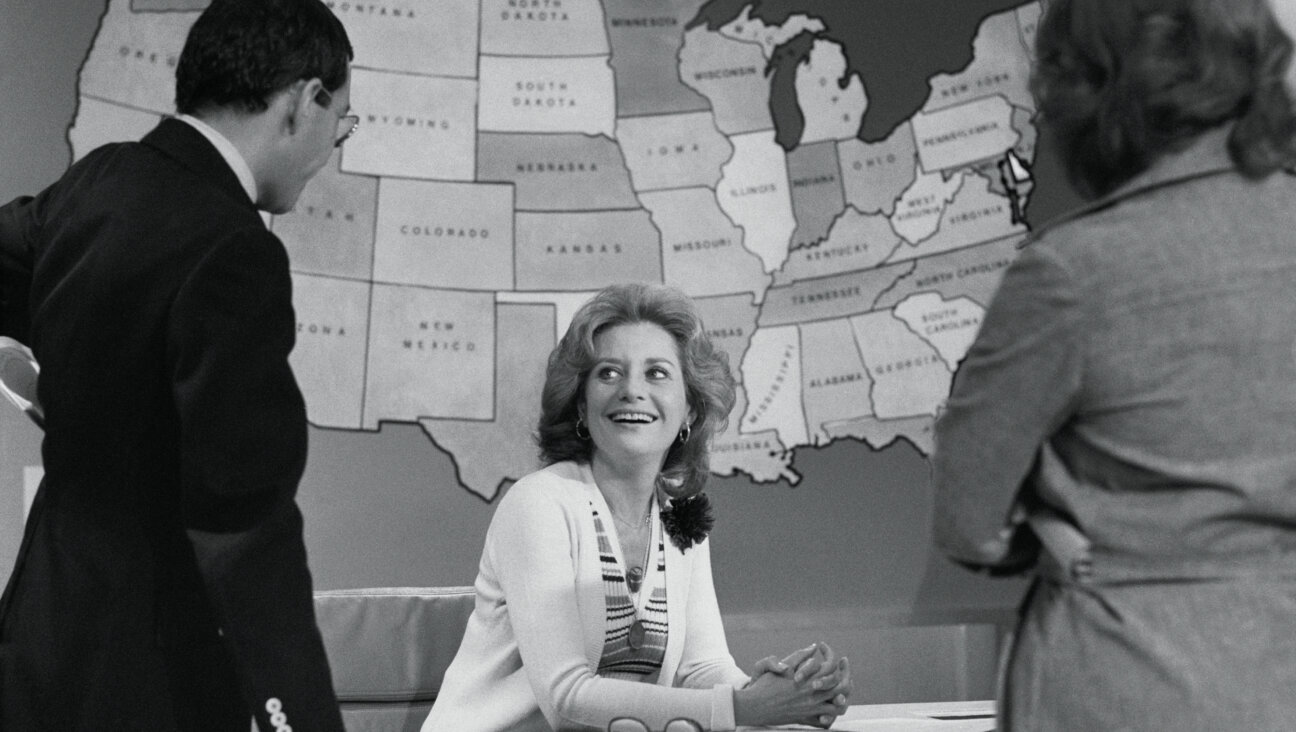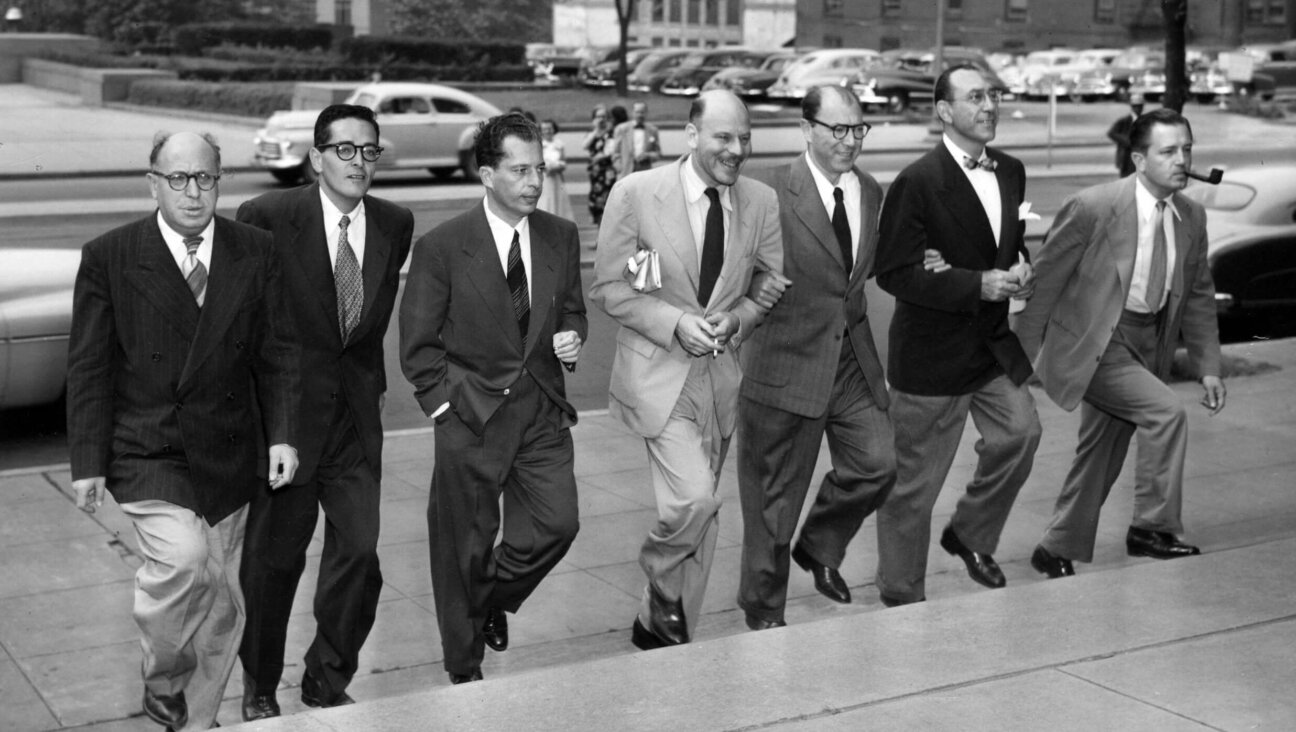A Nun At Purim

Image by Getty Images
Despite its regular appearance on the Jewish calendar, Purim tends to take me by surprise each year, leaving me scrambling to bake my hamentashen and assemble a costume for our synagogue’s all-ages party. Last year, though, I was prepared.
“I’m going as a nun,” I announced to my husband. A friend had a costume from a long ago Halloween, and I was itching to wear it.
My husband regarded me uneasily. “That’s a bad idea,” he said. “Like decorating with a Buddha statue. Disrespectful.” His frown deepened. “Maybe even sacrilegious.”
I was taken aback. Disrespect was the last thing on my mind.
I admit it: I’m a Jew with a thing for nuns. It’s a fascination I trace directly to weekends with my grandmother as a kid. After my parents dropped me off at her apartment on Friday nights, Grandma lit the Shabbat candles and fed me dinner. Then we got down to the main activity: watching old movies.
A child of the 80s, I savored those black and white films, with their sophisticated stars and elegant gowns. The movies I watched on Grandma’s plaid couch were an escape from suburban New Jersey and an entrée to a world of romance, intrigue, and retro glamour.
They also introduced me to the convent.
Sister Mary Benedict was my first nun. I was eleven when I watched The Bells of St. Mary’s, and I still remember the allure of the eponymous convent’s mother superior, played by a luminous Ingrid Bergman. Devout yet feisty, Sister Mary Benedict trusted the Lord but wasn’t too unworldly to consult a boxing manual and teach a bullied student to fight back. And in her classic black and white habit, she radiated a dazzling inner serenity (assisted, I now realize, by the lighting man).
I fell hard for Sister Mary Benedict and her convent – a predictable response, perhaps, for a girl growing up in a strictly secular family. More comfortable discussing sex than God, my Jewish father and Episcopalian mother had long ago abandoned the faiths of their childhoods, and both resolutely avoided the topic of religion. Even my grandmother seemed to light her Friday night candles out of habit, never explaining the words she murmured as she passed her hands over the twin flames.
With a kid’s instinctive attraction to the unspoken, I had long been curious about religion, an exotic, forbidden topic burnished with a sheen of mystery. True, Sister Mary Benedict’s black habit and white wimple lacked the appeal of the sleek gowns I admired in other films. But she and her movie sisters, with their long robes and unfamiliar rituals, seemed to embody the compelling enigma of religious practice – and I couldn’t get enough of them.
As I grew up, the nun fascination never really faded. I relished movies about idealistic young nuns (Nun’s Story) jealous, tormented nuns (Black Narcissus), classic nuns (Sound of Music), and fake nuns (Sister Act). Later, memoirs like Deborah Larsen’s The Tulip and the Pope and Karen Armstrong’s Through the Narrow Gate tempered those screen portrayals of religious life for me, depicting not only the spiritual conviction I’d admired in Sister Mary Benedict, but also the difficulties and doubts faced by her real-life counterparts.
As an adult, I found my way to Jewish practice, marrying a Jew, becoming active in a synagogue, raising Jewish children. The rhythms of the Jewish year, the Hebrew prayers, the communal search for contemporary meaning in ancient texts, all answered my old yearning to engage with a spiritual tradition.
I did not, however, abandon my fascination with nuns.
By now, of course, I was aware of the troubled history between Jews and the Catholic Church. But I also knew about nuns like Hungarian Sara Salkahazi, who sheltered Jews during the Second World War, and the courageous sisters chronicled by Suzanne Vromen in her 2010 history, Hidden Children of the Holocaust: Belgian Nuns and their Daring Rescue of Young Jews from the Nazis. So when I decided to dress as a nun for Purim, it was not with the intent to mock.
Troubled by my husband’s reaction, I asked a few old-timers at my Reconstructionist synagogue. Was it really disrespectful to don a nun costume? They seemed surprised by my question. “Of course it’s ok, it’s Purim. Anything goes!”
Still, I approached our education director for a final opinion. She hesitated. “Well,” she said at last, choosing her words carefully, “It sounds ok. But we do have interfaith families here. Could someone feel like their tradition was being made light of?”
“You see?” said my husband.
So on the night of the Purim party, I donned nerd glasses, a sweatshirt, and a tool belt, tucked a notebook under my arm, and went to shul as Harriet the Spy.
But before I returned the nun costume, in the privacy of my bedroom, I pulled on the long robe, tucked my hair under the white wimple, and set the black veil on my head. Then I stared at my reflection, bemused by how effectively those few pieces of fabric obscured my identity as a twenty-first century woman. No other costume had ever done that.
A sunbonnet and long dress never made me Ma Ingalls on Purim, any more than a paper crown and pink ruffled gown transformed me into a princess. Instead, I always looked like exactly what I was: someone playing dress-up. The nun costume felt different, transforming. Framed by the wimple, my face took on an unknowable, timeless quality, revealing nothing.
That denial of self, manifested physically by the anonymity of the habit, was, I knew, the whole idea, a point made repeatedly in all those nun movies and memoirs. But as I stood there looking at myself, it wasn’t my old heroine, Sister Mary Benedict, that I was thinking about. It was Esther, hiding her identity in Ahasuerus’ palace. Was this how she felt in her Shushan finery, I wondered, silent about her Jewishness until the time to act?
I’m fortunate, I know, to live in a time and place where dressing up as someone else is a happy holiday tradition, rather than a matter of survival. For me, trying on that habit was as close as I’ll ever get to disguising my identity, like Esther and so many Jews after her. Others don’t have that luxury: those here among us, and worldwide, whose identities make them targets of discrimination, deportation, and persecution. Maybe I didn’t wear it to the synagogue, but in reminding me of them, and of our Jewish commitment to act on their behalf, the nun’s habit served its Purim purpose, after all.
Kate Haas is an editor at Literary Mama. Her essays have most recently appeared in The New York Times, The Washington Post, The Boston Globe Magazine, and Full Grown People. She lives in Portland, Oregon.























